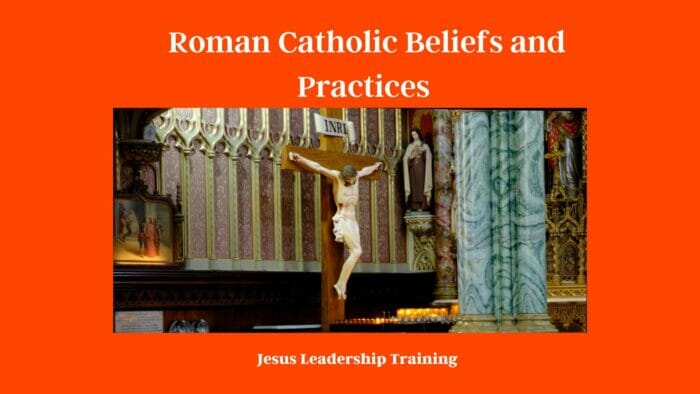Roman Catholic Beliefs and Practices – Dive deep into the intricate beliefs and practices of Roman Catholicism. From daily routines to major theological stances, this comprehensive guide unveils the beauty and depth of the Roman Catholic faith.
Table of Contents
Roman Catholic Beliefs and Practices
Roman Catholicism, a prominent branch of Christianity, has rooted its beliefs and practices in sacred traditions and scriptures over millennia. By understanding the fundamentals, we shed light on the vibrant spiritual journey of Catholics worldwide.
Below is a table that presents key Roman Catholic beliefs, a brief description, and a corresponding Bible reference or tradition reference:
| Belief | Description | Bible/Tradition Reference |
|---|---|---|
| Trinity | God is one essence in three Persons: Father, Son, and Holy Spirit. | Matthew 28:19 |
| Incarnation | Jesus, the Son of God, became flesh and lived among humanity. | John 1:14 |
| Resurrection | Jesus rose from the dead three days after his crucifixion. | 1 Corinthians 15:3-8 |
| Sacraments | Visible signs of invisible grace, instituted by Christ for our sanctification. | Various; e.g., Baptism: Matthew 28:19-20 |
| Eucharist | The bread and wine become the actual body and blood of Christ. | Luke 22:19-20 |
| Virgin Birth | Mary conceived Jesus by the power of the Holy Spirit, remaining a virgin. | Luke 1:34-35 |
| Assumption of Mary | Mary was taken up, body and soul, into Heaven at the end of her earthly life. | Tradition: Dogma defined in 1950 |
| Immaculate Conception | Mary was conceived without original sin. | Tradition: Dogma defined in 1854 |
| Confession | Sinners confess sins to a priest to receive absolution and reconciliation. | John 20:22-23 |
| Papal Authority | The Pope, as the successor of Peter, has supreme authority over the Church. | Matthew 16:18-19 |
| Purgatory | A state of purification for souls who died in God’s friendship but need cleansing. | Tradition; alluded to in 1 Corinthians 3:15 |
| Prayer to Saints | Asking saints to intercede on our behalf before God. | Tradition; supported by Revelation 5:8 |
| Real Presence | Christ is truly present in the Eucharist, not just symbolically. | John 6:51-56 |
| Apostolic Succession | The unbroken line of bishops from the Apostles to the present. | Acts 1:20-26; Tradition |
| Moral Absolutes | Some actions are intrinsically wrong, regardless of circumstances. | Various; e.g., Ten Commandments: Exodus 20 |
Please note: While many Catholic beliefs are rooted in the Bible, others are derived from Sacred Tradition, which Catholics believe is another source of divine revelation alongside Sacred Scripture. The references provided give a basis for each belief but are not exhaustive. To understand these beliefs fully, one would typically refer to the Catechism of the Catholic Church and consult theological writings.
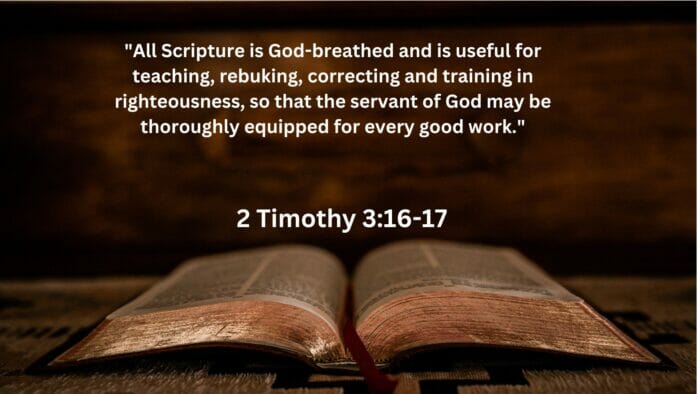
Daily Catholic Practices
Prayer
Prayer is the heartbeat of Catholic life. The “Hail Mary,” “Our Father,” and the “Glory Be” are just a few of the staple prayers Catholics recite daily. Praying the rosary is another beloved practice, providing moments of reflection on the life of Jesus and his mother, Mary.
Bible
For Catholics, the Bible is a treasure trove of divine revelation. It isn’t just a book but a living testament. Catholics are encouraged to read and meditate on its scriptures, drawing wisdom and guidance for life’s journey.
Simple Life
Emulating Christ’s humility, many Catholics aim for a simple life. This doesn’t mean shunning all pleasures but prioritizing spiritual wealth over materialism.
Here’s a table that presents some of the Roman Catholic practices, a description, their typical frequencies, and a corresponding Bible or tradition reference:
| Practice | Frequency | Description | Bible/Tradition Reference |
|---|---|---|---|
| Mass Attendance | Weekly (Sundays) | The celebration of the Eucharist and central act of worship in Catholicism. | Hebrews 10:25; Tradition |
| Holy Days of Obligation | Varies (e.g., 6 in the U.S.) | Special feast days where Catholics are obliged to attend Mass. | Tradition |
| Fasting and Abstinence | Specific days (e.g., Lent) | Reduction of food or abstaining from meat as a form of penance. | Matthew 6:16-18; Tradition |
| Receiving Communion | Ideally weekly, but at least once a year | Receiving the Body and Blood of Christ in the form of bread and wine. | John 6:53-54; 1 Corinthians 11:23-29 |
| Confession | At least once a year | Sacrament of Reconciliation where sins are confessed to a priest. | John 20:21-23; James 5:16 |
| Praying the Rosary | Varies (many daily) | Meditative prayer involving beads and reflecting on the mysteries of Christ’s life. | Tradition (though rooted in Biblical events) |
| Advent & Lenten Practices | Annually (seasonal) | Special seasons of preparation before Christmas and Easter, involving prayer, penance, and almsgiving. | Tradition |
| Prayer before meals | Daily (before meals) | Thanking God for sustenance and blessings. | 1 Timothy 4:4-5 |
| Anointing of the Sick | As needed | Sacrament given to those who are seriously ill or facing surgery. | James 5:14-15 |
| Marriage | Once (unless widowed) | Sacrament uniting a man and woman in a lifelong bond. | Matthew 19:4-6; Ephesians 5:31-32 |
| Holy Orders | Once | Sacrament where men are ordained as deacons, priests, or bishops. | Acts 6:6; 1 Timothy 4:14 |
| Confirmation | Once | Sacrament of initiation, strengthening, and deepening one’s baptismal grace. | Acts 8:14-17; Tradition |
| Baptism | Once | Sacrament of initiation, washing away of original sin, and becoming a member of the Church. | Matthew 28:19; Acts 2:38 |
This table provides a glimpse into Catholic practices, but it’s worth noting that individual devotion and participation may vary. Some Catholics might pray the Rosary daily, while others might do it less frequently. Some of these practices are obligatory under Church law (e.g., Mass on Sundays and Holy Days), while others are strongly recommended.
How to be a Good Catholic Man
A good Catholic man endeavors to emulate Christ in his actions, be it in family roles, professional life, or community involvement. He prioritizes love, compassion, and righteousness.
How to be a Good Catholic Woman
Catholic women often look up to Mary, Jesus’s mother, as a role model. Her faith, grace, and virtue are qualities Catholic women aspire to incorporate in their daily lives.
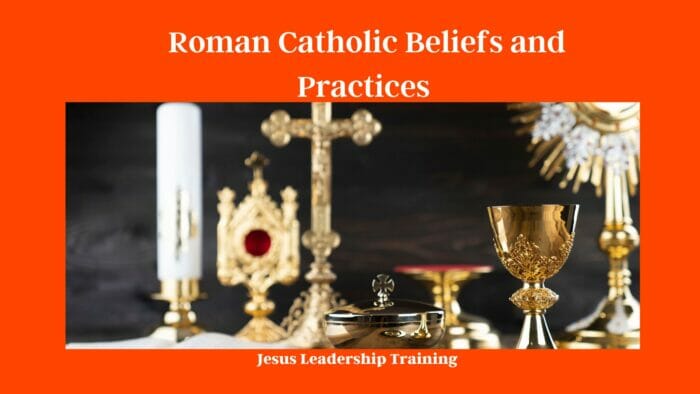
10 Things That You Believe in Catholic Religion
Trinity
Central to Catholic belief is the Trinity: God exists as three persons but is one God – the Father, the Son, and the Holy Spirit.
Incarnation
The incarnation is the belief that God’s son, Jesus, became man to save humanity. He lived, died, and rose from the dead, offering hope to all.
Resurrection
The resurrection, the cornerstone of Catholicism, signifies Jesus’s victory over death, promising eternal life to believers.
Church
The Church isn’t just a physical structure. It’s the community of believers worldwide, the body of Christ on Earth.
Eucharist
Catholics believe the Eucharist is not symbolic. Through Transubstantiation, bread and wine become the actual body and blood of Christ during Mass.
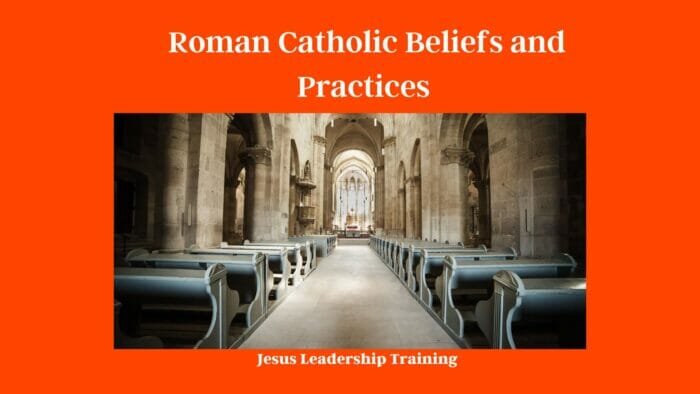
Mary
Mary, revered as the mother of God, holds a special place in Catholic hearts. Her “yes” to God symbolizes ultimate faith and obedience.
Virgin Birth
The belief that Mary conceived Jesus while still a virgin, through the Holy Spirit, is another cornerstone of Catholic faith.
Priest
Priests, chosen representatives of Christ, serve the Church by administering sacraments, guiding the flock, and living a life of celibacy and devotion.
Office of Pope
The Pope, often called the Vicar of Christ, is the spiritual leader of the Catholic Church. His role is pivotal in guiding Catholics worldwide.
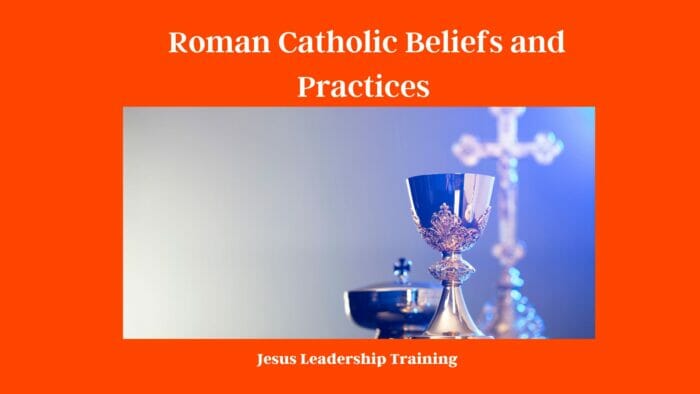
Charity
Charity isn’t just an act; it’s a way of life. Catholics believe in loving and serving their neighbor, reflecting God’s love for all.
5 Catholic Beliefs about God
Jesus is God
Jesus isn’t just a prophet or teacher. For Catholics, He is God incarnate, the second person of the Trinity.
Catechism
The Catechism of the Catholic Church offers a detailed exposition of Catholic faith, including beliefs about God, sacraments, and commandments.
The Catechism of the Catholic Church is a comprehensive presentation of the faith, encompassing beliefs, moral teachings, and more. Breaking down its entirety would be a monumental task, as it covers a wide range of topics. However, here’s a simplified table that outlines some of the main sections of the Catechism along with age indications based on typical catechetical practices:
| Main Point | Description | Typical Age Requirement |
|---|---|---|
| The Profession of Faith | Covers what Catholics believe, particularly the Nicene Creed. Discusses the nature of God, the Trinity, the Church, and the communion of saints. | No specific age; taught to children and adults alike. |
| The Celebration of the Christian Mystery | Details the Sacraments of the Church: their significance, the rites involved, and their effects. | Ages vary by sacrament: |
| – Baptism: Usually as infants, but can be any age. | ||
| – Eucharist: Typically around age 7 (First Communion). | ||
| – Confirmation: Often between ages 12 and 18, but can be received later. | ||
| – Reconciliation: Before First Communion, around age 7. | ||
| – Anointing of the Sick: No age limit; given when gravely ill or facing serious surgery. | ||
| – Holy Orders: Adult men, typically after years of discernment and formation. | ||
| – Matrimony: Adults; age varies by local civil law and church requirements. | ||
| Life in Christ | Discusses the moral teachings of the Church. How one should live according to the commandments and the Beatitudes. Covers topics like grace, conscience, virtues, and sin. | Begins in early education and continues through adulthood. |
| Christian Prayer | Explores the importance and different forms of prayer in the Christian life. Delves into the Lord’s Prayer (Our Father) in detail, explaining its significance and various petitions. | Begins in early education and continues through adulthood. |
This table provides a broad overview. The Catechism itself is much more detailed, with each section containing numerous subsections that delve into the teachings, their biblical and traditional foundations, and their implications for daily life. The age indications provided are based on typical practices, but individual experiences can vary, especially in different cultures or under different circumstances.
Virgin Mary
Beyond being Jesus’s mother, Mary is also honored as the mother of the Church. Her perpetual virginity and Immaculate Conception are pivotal Catholic beliefs.
Eucharist – Actual Blood and Body
At every Mass, Catholics believe the bread and wine transform into the actual body and blood of Christ, a mystery profound and sacred.
Certainly, the Eucharist, often called the Holy Communion or Mass, is one of the seven sacraments in the Roman Catholic Church and is central to Catholic worship. Here’s a table outlining its main points, descriptions, and typical age requirements:
| Main Point | Description | Typical Age Requirement |
|---|---|---|
| Institution of the Eucharist | Refers to the Last Supper when Jesus took bread and wine, blessed them, and gave them to His disciples, saying, “This is my body” and “This is my blood.” The Church believes that during the Eucharistic celebration, the bread and wine become the Body and Blood of Christ, while still appearing as bread and wine. | Not age-specific; foundational belief. |
| Real Presence | The doctrine that Jesus is truly present in the Eucharistic elements: Body, Blood, Soul, and Divinity. This isn’t a symbolic presence but a real, substantial presence, though the appearances of bread and wine remain. | Not age-specific; foundational belief. |
| Reception of the Eucharist | Catholics believe in receiving the Eucharist as an intimate union with Jesus Christ. They are encouraged to receive it frequently, if not daily, as it provides spiritual nourishment. Receiving the Eucharist in a state of grace (i.e., free from mortal sin) is essential. If one has committed a mortal sin, they should go to confession before receiving. | First Holy Communion: Typically around age 7. |
| Eucharistic Celebration | The Mass is divided into two main parts: the Liturgy of the Word (scripture readings, homily, creed, and prayers of the faithful) and the Liturgy of the Eucharist (presentation of the gifts, Eucharistic prayer, the Lord’s Prayer, and the distribution of Communion). The Mass is a sacrifice, a meal, and a gathering of the community. | Not age-specific; all are welcome. |
| Eucharistic Adoration | A practice where the consecrated Eucharistic host is displayed in a monstrance for adoration by the faithful. This is a time for personal prayer, reflection, and worship of the Real Presence of Christ. | No specific age; open to all. |
| Eucharistic Fasting | Before receiving the Eucharist, Catholics are to fast for at least one hour from food and drink, except water and medicine. This is a sign of reverence and preparation for receiving the Lord. | First Holy Communion: Typically taught around age 7, but applies throughout life. |
This table provides an overview of the central elements of the Eucharist in Catholic belief and practice. The age indications for First Communion are based on common practices in many parts of the world, but the exact age may vary in different cultures or under specific circumstances.
Roman Catholic vs Catholic
Orthodox Differences
While both have roots in early Christianity, Roman Catholics and Orthodox Christians diverged in the Great Schism of 1054, mainly over issues like papal authority.
It seems there’s a slight misunderstanding in the premise of the question. The term “Catholic” usually refers to members of the Roman Catholic Church, and so, in essence, Roman Catholics are Catholics. However, there are other rites and churches in communion with Rome, and then there are groups often termed “Old Catholics” or other independent Catholic groups not in communion with Rome. Additionally, the Eastern Orthodox churches have many similarities with Roman Catholic beliefs but are not in communion with Rome.
For the sake of clarity, I’ll provide a comparison table between Roman Catholic beliefs and practices and those of the Eastern Orthodox Church, as they are the closest in terms of doctrine and structure but have distinct differences. If you meant a different group by “Catholics in general,” please specify.
| Aspect | Roman Catholic | Eastern Orthodox |
|---|---|---|
| Supreme Authority | The Pope in Rome is considered the supreme authority and the Vicar of Christ on Earth. | No single supreme authority. Authority is distributed among the various patriarchs and bishops. |
| Filioque Controversy | The Holy Spirit proceeds from both the Father “and the Son” (Filioque in Latin). | The Holy Spirit proceeds only from the Father. |
| Immaculate Conception | The belief that Mary was conceived without original sin. | Not formally accepted. While Mary is highly venerated, the concept of her immaculate conception isn’t a dogma. |
| Transubstantiation | The belief that during the Eucharist, the bread and wine become the actual Body and Blood of Christ. | Similar belief in the real presence, but the exact nature of the transformation isn’t defined dogmatically. |
| Divorce | Divorce is not recognized. However, annulments can be granted in specific circumstances. | Divorce is allowed in certain circumstances, and remarriage is possible but not encouraged. |
| Liturgical Practice | Primarily uses the Latin Rite. | Uses various Eastern rites, with liturgy often in the vernacular or Church Slavonic. |
| Clerical Celibacy | Priests in the Latin Rite must remain celibate, while in some Eastern Catholic Churches they can marry. | Priests can be married but must decide before ordination. Bishops must be celibate. |
This table captures some of the key differences between the Roman Catholic and Eastern Orthodox traditions. Both churches have rich histories and share many theological and liturgical elements.
Protestant Differences
The Protestant Reformation in the 16th century led to a split from Roman Catholicism. Key differences include beliefs about salvation, church traditions, and sacraments.
Here’s a comparison table between Roman Catholic beliefs and typical Protestant beliefs. Note that Protestantism is diverse with many denominations, so this table will represent general differences:
| Aspect | Roman Catholic | Protestant |
|---|---|---|
| Supreme Authority | Church tradition and the Pope, alongside the Bible, are central authorities. | Sola Scriptura: The Bible alone is the primary authority. |
| Salvation | Grace through the sacraments, faith, and good works are all part of salvation. | Sola Fide: Faith alone is sufficient for salvation, though good works are a fruit of genuine faith. |
| Eucharist | Transubstantiation: The bread and wine become the actual Body and Blood of Christ. | Symbolic or memorial view in many denominations; some, like Lutherans, believe in the real presence. |
| Role of Mary | Highly venerated as the Mother of God, immaculately conceived and assumed into heaven. | Respected as the mother of Jesus, but typically not venerated or prayed to in the same way. |
| Sacraments | Seven sacraments: Baptism, Confirmation, Eucharist, Reconciliation, Anointing of the Sick, Marriage, Holy Orders. | Mainly two (though varies by denomination): Baptism and the Lord’s Supper. |
| Priesthood | Celibate clergy in the Latin Rite. Priests mediate many of the sacraments. | Many denominations allow clergy to marry; direct priesthood of all believers without need for priestly mediation in many denominations. |
| Original Sin | Baptism removes the stain of original sin. | Varies by denomination, but generally believed that individuals are sinful and need salvation. |
| Prayer Intercession | Prayers can be directed to saints and Mary, asking them to intercede with God. | Direct relationship and prayer to God without the need for saintly intercession in most denominations. |
| Papal Infallibility | The Pope is infallible when speaking ex cathedra on matters of faith and morals. | Rejected. No single human authority has infallibility. |
| Apocrypha/Deuterocanonical Books | Accepted as part of the biblical canon. | Typically not considered canonical, but may be respected for historical or devotional value in some traditions. |
This table provides an overview of some of the general differences. Within Protestantism, there are many denominations (e.g., Baptist, Methodist, Lutheran, Anglican, Pentecostal), and each might have nuances in beliefs and practices.
Roman Rite
The Roman Rite, the most widespread liturgical rite in Catholicism, is the manner in which Catholics celebrate the Mass.
The Roman Rite is the liturgical rite used in the Diocese of Rome and, with certain variations, in nearly all the Latin Church of the Catholic Church. It’s the most widely practiced rite within Catholicism. Here’s a table that explains some of its central features:
| Aspect | Description |
|---|---|
| Origin | The liturgical practices of the Church in Rome. |
| Primary Language | Latin, but since the Second Vatican Council, the vernacular (local languages) has been widely used. |
| Liturgical Calendar | Divided into seasons like Advent, Christmas, Ordinary Time, Lent, the Triduum, and Easter. Each season has its own focus, readings, and colors. |
| Mass Structure | Consists of the Liturgy of the Word (readings, homily, creed, intercessions) and the Liturgy of the Eucharist (offertory, consecration, communion). |
| Important Texts | The Roman Missal (contains the prayers for Mass), Lectionary (contains the scriptural readings), General Instruction of the Roman Missal. |
| Music | Gregorian chant has pride of place, but other forms of liturgical music are also used, depending on the local culture and preferences. |
| Vestments | Worn by the clergy during liturgical celebrations; their style and color change according to the liturgical season or specific feast. |
| Sacraments | Seven sacraments are celebrated: Baptism, Confirmation, Eucharist, Penance (Reconciliation), Anointing of the Sick, Marriage, and Holy Orders. |
| Major Liturgical Celebrations | The Easter Triduum (Holy Thursday, Good Friday, and Easter Vigil), Christmas, Pentecost, and the feasts of important saints. |
| Ritual Variations | While the Roman Rite is consistent, there are minor variations, such as the Anglican Use for former Anglican communities that have entered full communion with Rome. |
This table gives an overview of the Roman Rite, which has centuries of history, theology, and pastoral practice behind it. It’s worth noting that while the Roman Rite is predominant within the Latin Church, there are also other rites in the Catholic Church (e.g., the Byzantine, Maronite, and Coptic rites), especially within the Eastern Catholic Churches.
Controversial Catholic Beliefs
Certainly! Here’s a table of controversial issues in the Roman Catholic Church:
| Issue | Description | Notes |
|---|---|---|
| Clerical Celibacy | The mandatory vow of celibacy taken by priests. This means that most Catholic priests cannot marry or engage in sexual relations. | Some argue it’s necessary for priestly purity and dedication, while others believe it should be optional. |
| Women in the Priesthood | The Church does not ordain women as priests, basing its stance on tradition and its interpretation of scripture. | Many argue for female ordination, pointing to the role of women in the early Church and the need for equality. |
| Contraception | The Catholic Church opposes artificial contraception, saying it disrupts the natural process and purpose of sex. | Many Catholics, especially in the West, disagree with this teaching and use contraception. |
| Same-sex Marriage | The Church believes marriage is a sacrament between a man and a woman. It does not recognize or support same-sex marriages. | This stance has been a point of contention, especially in countries where same-sex marriage is legal. |
| Abortion | The Church firmly opposes abortion, considering it a grave sin since it believes life begins at conception. | This stance is rooted in the Church’s pro-life position, but it’s a divisive issue in many societies. |
| Divorce and Remarriage | While the Church recognizes civil divorce, it does not acknowledge the dissolution of a sacramentally valid marriage. Remarriage without an annulment is seen as adultery. | This policy has led to debates, especially with the rising rates of divorce and remarriage. |
| Sexual Abuse Scandals | Reports of sexual abuse by priests and subsequent cover-ups have deeply hurt the Church’s reputation. | The Church has been criticized for not taking stronger actions against perpetrators and for transparency issues. |
| Liturgy and Traditionalism | Changes to the liturgy since Vatican II (in the 1960s) have been controversial. Some prefer the traditional Latin Mass, while others support the vernacular languages and modern rites. | There’s an ongoing debate about the direction of liturgical practices. |
| Interfaith Dialogue | While the Church promotes dialogue with other religions, some conservative factions believe this compromises Catholic teachings. | There’s a balance between respecting other religions and upholding one’s own beliefs. |
| Role of the Laity | Post-Vatican II, there’s been a push for increased involvement of the laity in Church matters. Some argue for more lay involvement, while others believe it could compromise clerical authority. | The debate considers the roles laypeople should play in the administration and spiritual direction of the Church. |
Please note that the descriptions provided are concise overviews. Each of these issues has deep historical, theological, and sociological complexities, and the views of individual Catholics on these issues can vary widely.
Outdated
Critics often see certain Catholic doctrines as outdated, especially regarding gender roles, sexuality, and modern moral dilemmas.
Corruption
The Church has faced criticism over instances of corruption, leading many to question its moral integrity.
Negative Effects of Religion
Some argue that rigid religious beliefs can foster intolerance or extremism.
Morals
Where does the Church stand on modern moral dilemmas? Its stance on issues like euthanasia, abortion, and LGBTQ+ rights has been a matter of debate.
Final Thoughts – Roman Catholic Beliefs and Practices
Catholicism, with its rich tapestry of beliefs and practices, remains a guiding light for millions. While it faces challenges and criticisms, its core message of love, sacrifice, and redemption
Here’s a list of 10 frequently asked questions (FAQs) about Roman Catholic beliefs, along with concise answers:
1. What do Catholics believe about God?
Answer: Catholics believe in one God, existing in three distinct persons: the Father, the Son (Jesus Christ), and the Holy Spirit. This is known as the doctrine of the Holy Trinity.
2. How do Catholics view the Bible?
Answer: Catholics view the Bible as the inspired Word of God. It is a central and integral part of the Church’s tradition. The Catholic Bible includes several books not found in Protestant Bibles, known as the Deuterocanonical books.
3. What is the significance of the Pope in Catholicism?
Answer: The Pope, currently Pope Francis, is considered the Bishop of Rome and the spiritual successor to Saint Peter. He is the visible head of the worldwide Catholic Church and serves as a symbol of unity for Catholics.
4. Why do Catholics venerate the Virgin Mary?
Answer: Catholics venerate Mary because she is the Mother of Jesus, the Son of God. They believe she played a unique role in salvation history and was assumed into heaven. However, veneration is different from worship; only God is worshipped.
5. What are the Sacraments in Catholicism?
Answer: Sacraments are outward signs instituted by Christ to give grace. There are seven: Baptism, Confirmation, Eucharist, Penance (or Reconciliation), Anointing of the Sick, Holy Orders, and Matrimony.
6. Why do Catholics confess sins to a priest?
Answer: Catholics believe that Jesus gave the apostles the authority to forgive sins in His name (John 20:23). Confession to a priest is seen as a continuation of this apostolic authority.
7. How do Catholics view salvation?
Answer: Catholics believe salvation is a gift from God, achieved through the life, death, and resurrection of Jesus Christ. It requires faith and works, including participation in the sacraments and living a moral life.
8. What is the Catholic stance on the afterlife?
Answer: Catholics believe in heaven, hell, and purgatory. Heaven is eternal communion with God, hell is eternal separation, and purgatory is a temporary state of purification for souls destined for heaven but needing cleansing.
9. Do Catholics worship saints?
Answer: No, Catholics do not worship saints. They venerate or honor saints as holy men and women who lived exemplary lives of faith. Saints are seen as intercessors who can pray on behalf of the living.
10. What is the Catholic belief about the Eucharist?
Answer: Catholics believe that during the Mass, the bread and wine become the actual Body and Blood of Christ, while still appearing as bread and wine. This change is called “transubstantiation.”
These FAQs provide a concise overview of some core Catholic beliefs, but each topic can be delved into more deeply for a comprehensive understanding.



